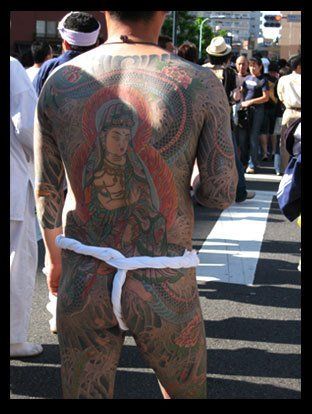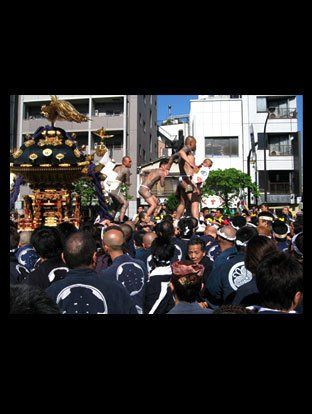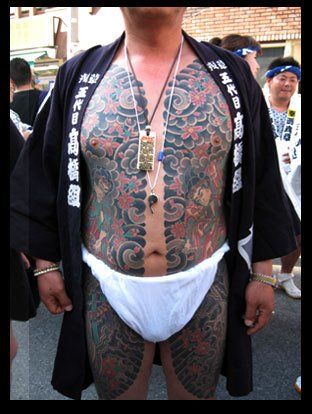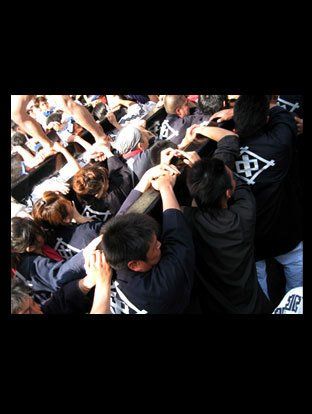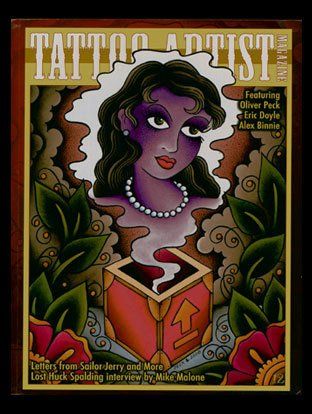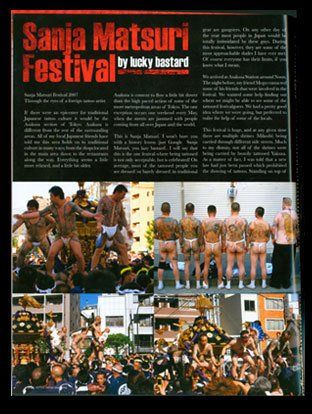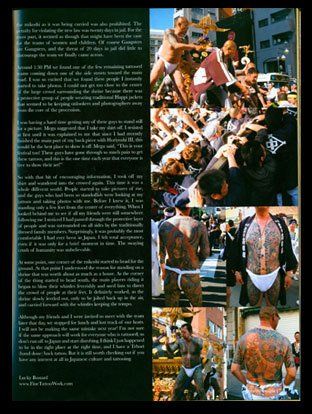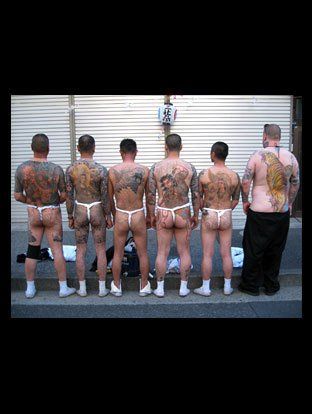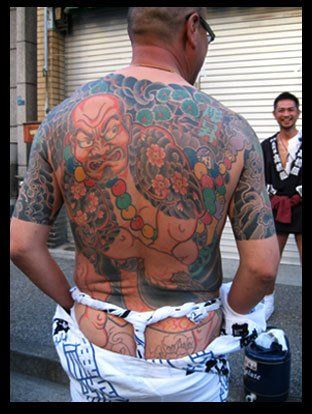
SANJA MATSURI FESTIVAL 2007 – Through the Eyes of a Foreign Tattoo Artist
If there is an epicenter for traditional Japanese tattoo culture, it would be the Asakusa section of Tokyo. Asakusa is different from the rest of the surrounding areas. All of my local Japanese friends have told me this area holds on to traditional culture in many ways; from the shops located in the main area down to the restaurants along the way. Everything seems a little more relaxed, and a little bit older. Asakusa is content to flow a little bit slower than the high paced action of some of the more metropolitan areas of Tokyo. The one exception occurs one weekend every May, when the streets are jammed with people coming from all over Japan and the world.
This is Sanja Matsuri. I won't bore you with a history lesson (just Google Sanja Matsuri, you lazy bastard). I will say that this is the one festival where being tattooed is not only acceptable, but is celebrated! On average, most of the tattooed people you see dressed (or barely dressed) in traditional gear are gangsters. On any other day of the year most people in Japan would be totally intimidated by these guys. During this festival, however, they are some of the most approachable dudes I have ever met. Of course everyone has their limits, if you know what I mean.
We arrived at Asakusa Station around Noon. The night before, my friend
Megu contacted some of his friends that were involved in the festival. We wanted some help finding out where we might be able to see some of the tattooed festival-goers. We had a pretty good idea where we were going, but preferred to enlist the help of some of the locals.
This festival is huge, and at any given time there are multiple shrines (Mikoshi) being carried through different side streets. Much to my dismay, not all of the shrines were being carried by heavily tattooed Yakuza. As a matter of fact, I was told that a new law had just been passed which prohibited the showing of tattoos. Standing on top of the mikoshi as it was being carried was also prohibited. The penalty for violating the new law was twenty days in jail. For the most part, it seemed as though that might have been the case for the teams of women and children. Of course Gangsters are Gangsters, and the threat of 20 days in jail did little to discourage the team we finally came across. Around 1:30 PM we found one of the few remaining tattooed teams coming down one of the side streets toward the main road. I was so excited that we found these people I instantly started to take photos. I could not get too close to the center of the large crowd surrounding the shrine because there was a protective group of people wearing traditional Happi jackets that seemed to be keeping onlookers and photographers away from the core of the procession.
I was having a hard time getting any of these guys to stand still for a picture. Megu suggested that I take my shirt off. I resisted at first until it was explained to me that since I had recently finished the main part of my back piece with Horiyoshi III, this would be the best place to show it off. Megu said, "This is your festival too! These guys have gone through so much pain to get these tattoos, and this is the one time each year that everyone is free to show their art!"
So with that bit of encouraging information, I took off my shirt and wandered into the crowd again. This time it was a whole different world. People started to take pictures of me, and the guys who had been so standoffish were looking at my tattoos and taking photos with me. Before I knew it, I was standing only a few feet from the center of everything. When I looked behind me to see if all my friends were still somewhere following me I noticed I had passed through the protective layer of people and was surrounded on all sides by the traditionally dressed family members. Surprisingly, it was probably the most comfortable I had ever been in Japan. I felt total acceptance, even if it was only for that moment in time. The swaying crush of humanity was unbelievable.
At some point, one corner of the mikoshi started to head for the ground. At that moment I understood the reason for standing on a shrine that was worth about as much as a house. As the corner of the thing started to head South, the main players riding it began to blow their whistles feverishly, and used fans to direct the crowd of people at there feet. It definitely worked, as the shrine slowly leveled out, only to be jolted back up in the air, and carried forward with the whistles keeping the tempo.
Although my friends and I were invited to meet with the team later that day, we stopped for lunch and lost track of our hosts. I will not be making the same mistake next year! I'm not sure if the same approach will work for everyone who is tattooed; so don't run off to Japan and start disrobing. I think I just happened to be in the right place at the right time, and I have a Tebori (hand done) back tattoo. But it is still worth checking out if you have any interest at all in Japanese culture and tattooing.

